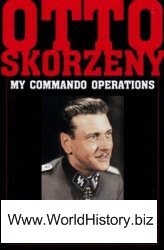The first nationwide fast food restaurant, McDonald’s took the concept of the assembly line and adapted it to FOOD production, capitalizing on the growth in SUBURBANIZATION during the 1950s.
Before founding McDonald’s, brothers Richard and Maurice McDonald failed at practically every BUSINESS venture they attempted. They moved to California from their home in New Hampshire in hopes of working in the movie business. Odd jobs for studios did not suit them, however, and their movie theater quickly folded in the midst of the Great Depression. In 1937, the brothers opened a hot-dog stand near the Santa Anita racetrack, but it was only successful during racing season. In 1940, with a $5,000 loan from the Bank of America, they opened a larger drive-in restaurant in the growing city of San Bernardino; it was an immediate success, making an annual profit of $40,000.
The brothers, however, were not satisfied. It took approximately 20 minutes for their customers to get their food, and with more and more families living farther away from their jobs, they had less and less time to spend waiting for a meal. The McDonald brothers realized that in order to speed production, they needed to streamline the restaurant, which meant smaller menus and higher volume. In 1948, they closed their business and invented what became the blueprint for the fast food restaurant. They focused their menu on the hamburger, by far their most popular item; rather than have a messy condiment stand, all burgers had ketchup, mustard, onions, and two pickles. Paper wrappers and cups replaced silverware and dishes; two custom-made stainless steel grills replaced a single cast-iron grill, and a machine that made peppermint patties was adapted to make hamburger patties instead. Finally, the work was specialized: Two workers each just made the hamburgers, milkshakes and french fries, two more just wrapped the burgers, and three others just took orders at the counter. Much like William J. Levitt’s mass-production system of building suburban houses, the McDonald brothers turned food production into an assembly-line process.
When the newly renovated McDonald’s restaurant opened in early 1949, business dropped off at first; teenage boys, who used the old drive-in as a hangout spot, were not welcome at the new family friendly location. By 1950, though, the brothers’ hard work paid off. The cheap prices (hamburgers were 15 cents and an entire family could eat for only $2.50), quick service, and clean facilities appealed to the small family, and, by 1951, McDonald’s gross profit was 40 percent higher than before the change. The restaurant quickly became legendary in the restaurant world, and the McDonald brothers were inundated with requests for information about their operation
One such interested person was Ray Kroc (1902-84), a 52-year-old self-made businessman who in the early 1950s was selling a milkshake mixer that could handle up to five shakes at a time. While his business was actually declining elsewhere in the country—small town drugstores and soda shops were closing as people moved to the suburbs— McDonald’s was using 10 of his machines by 1954, and Kroc went to San Bernardino to investigate why. Thoroughly impressed with what he found, Kroc approached the brothers about running their franchise operation. The brothers had sold their system to a few people in the region for a share of the profits, but their interest remained in their own store; they did not have the time or the patience for running a national operation. They hired Kroc to run it for them.
While the McDonald brothers invented the fast food restaurant, Kroc made McDonald’s a national institution. He was a rabidly persistent businessman who recognized that in order for McDonald’s to succeed as a national chain it had to be the same wherever a customer went. He imposed strict controls on menu options, pricing, quality control, cleanliness, and presentation, demanding franchisees to conform to every single specification. He moved the national headquarters to Chicago and opened his own franchise in the suburb of Des Plaines, stopping by every day before work to open the store and on his way home to clean up and close. In 1956, he awarded 12 franchises; by 1960, the total number reached 228, and it continued to rise, increasing by about 100 per year. While Kroc demanded strict conformity, he treated franchisees fairly, passing breaks in produce prices on to them and taking 1.9 percent of their receipts rather than charging high franchise fees up front.
In 1961, Kroc, who by this time saw the McDonald brothers as freeloaders letting him do all the work, bought them out for $2.7 million. In 1963, McDonald’s introduced the Ronald McDonald character that quickly became part of American POPULAR CULTURE, and it was the first restaurant in the country to buy ADVERTISING on TELEVISION. In 1965, with 710 McDonald’s restaurants in 44 states, the company went public on the New York Stock Exchange. In 1976, McDonald’s made over $2 billion in business, and reached over 20,000 locations across the globe by the end of the century.
Further reading: Marshall William Fishwick, ed., Ronald Revisited: The World of Ronald McDonald (Bowling Green, Ohio: Bowling Green University Popular Press, 1983); David Halberstam, The Fifties (New York: Villard Books, 1993); Ray Kroc with Robert Anderson, Grinding It Out: The Making of McDonald's (New York: St. Martin’s Press, 1977, 1987).
—Adam B. Vary
Media See journalism.




 World History
World History









